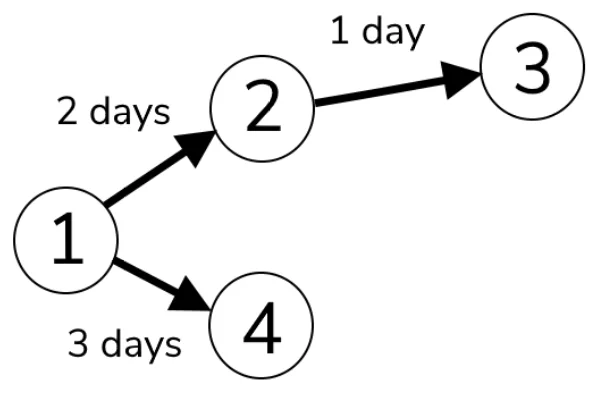
Microsoft Project Schedules – Complete Guide
Contents
Microsoft Project provides a comprehensive approach to scheduling.
It allows you to plan and manage your projects efficiently.
You can create detailed schedules that outline tasks, deadlines, and resources, helping you to stay on track.
So, whether you’re a seasoned project manager or just starting out:
Microsoft Project can be a valuable tool to add to your toolkit.
For a covering of everything Project has to offer, check out our Project courses here!
What Is A Project Schedule?
When it comes to managing a project, a project schedule is a critical component.
Essentially, a project schedule is a detailed timeline that outlines all the tasks and activities involved in completing a project, along with their associated timelines and dependencies.
By creating a project schedule, you can break down your project into smaller, more manageable tasks and then organize them in a logical order.
This allows you to track progress, manage resources, and ensure that your project stays on track.
A project schedule together with a project planner will allow you to successfully and easily manage your project.
How is it useful?
There are numerous benefits to using a project schedule when managing a project.
Firstly, it allows you to clearly communicate the project timeline and deadlines to all team members, ensuring that everyone is on the same page.
Secondly, by breaking the project down into smaller tasks and creating a schedule for each one, you can more easily identify and manage any potential roadblocks or delays.
Finally, by tracking progress against the schedule, you can quickly identify any areas where you may be falling behind and take corrective action before it’s too late.
Overall, a project schedule is an essential tool for any project manager, helping to ensure that your project is completed on time, within budget, and to the required quality standards.
How Does Microsoft Project Help?
Microsoft Project is a powerful tool that can help you manage all aspects of your project schedule.
One of the main advantages of Microsoft Project is that it allows you to create a detailed project plan, complete with tasks, timelines, and dependencies.
This can help you to identify potential roadblocks or issues early on in the project and make adjustments as necessary.
Microsoft Project also makes it easy to track progress against the project plan, allowing you to quickly identify any areas where you may be falling behind and take corrective action.
This helps to ensure that your project stays on track and is completed on time and within budget.
Another key feature of Microsoft Project is its ability to manage resources. With Microsoft Project, you can easily assign tasks to team members, track their progress, and monitor their workload.
This helps to ensure that your team is working efficiently, and that resources are being used effectively. You can also check out our full breakdown of Microsoft projects pros and cons here for more details!
Additionally, Microsoft Project provides tools for tracking project costs and budgets, allowing you to monitor expenses and ensure that you stay within budget.
Overall, Microsoft Project is an essential tool for project managers, providing everything you need to manage your project schedule from start to finish.
Making A Project Schedule
How to make a project schedule in simple terms without MS Project:
Creating a project schedule can seem overwhelming, but it’s actually quite simple if you break it down into manageable steps.
-
- Start by listing out all of the tasks that need to be completed in order to finish the project.
- Then, organize the tasks into a logical sequence and identify any dependencies between them.
- Estimate how long each task will take and assign a start and end date to each task.
- Next, consider the resources you’ll need to complete each task.
- Finally, review your project schedule and make adjustments as needed.
By breaking down the project into manageable tasks, estimating timelines, and considering resource constraints, you can create a project schedule that will help you stay on track and complete the project successfully.
You could also go ahead and add Risks and Contingencies to your project with this helpful guide!
Implementing Microsoft Project
Implementing your project schedule into Microsoft Project is a simple process.
- First, open Microsoft Project and create a new project.
- Then, navigate to the “Task” tab and begin entering your list of tasks.
- Once you have entered all of the tasks and resources, you can use Microsoft Project to generate a Gantt chart.
- Microsoft Project will automatically update the project schedule based on these status updates.
- You can also use Microsoft Project to generate reports that provide insights into the project’s progress!
Overall, implementing your project schedule into Microsoft Project can help you to stay organized, identify potential issues early on, and ensure that your project is completed on time and within budget.
Need a more visual representation for people to add information onto your schedule? Check out our Kanban Board guide here!
Project Schedule Use Cases
There are many situations where using a project schedule in Microsoft Project can be beneficial.
If you are working on a complex project with many tasks and dependencies, having a project schedule can help you to stay organized and ensure that everything is completed on time.
This is particularly important if you are working with a team, as it can help everyone to stay on the same page and work together effectively.
Additionally, a project schedule can help you to identify potential issues or conflicts early on, allowing you to make adjustments and avoid delays or cost overruns.
Making a project schedule also comes hand in hand with figuring out a critical path analysis.
Another situation where using a project schedule in Microsoft Project can be useful is if you need to track progress against specific deadlines.
For example, if you are working on a construction project with a set completion date, having a project schedule can help you to ensure that all of the tasks are completed in the correct order and on time.
This can help you to avoid delays that could impact the completion date and incur additional costs. Additionally, a project schedule can help you to allocate resources effectively, ensuring that you have the right people and equipment in place to complete each task.
Overall, a project schedule in Microsoft Projects can be a valuable tool for managing any type of project, from small-scale initiatives to large, complex endeavours.
Conclusion:
In summary, Microsoft Project is a powerful tool for creating and managing project schedules. By using Microsoft Project, you can easily create a detailed project schedule that includes all of the necessary tasks, resources, and timelines.
You can then use the tool to track progress against the schedule, identify potential issues or conflicts, and make adjustments as needed. This can be invaluable for ensuring that your project is completed on time and within budget.
Whether you are a casual or professional project user, the skills learned through using Microsoft Project can be incredibly useful.
For casual users, having the ability to create a project schedule can be helpful for managing personal or small-scale projects, such as home renovations or event planning.
This can help you to stay organized and ensure that everything is completed on time. For professional users, Microsoft Project can be a critical tool for managing complex projects with many moving parts.
By using Microsoft Project, you can ensure that everyone on the team is on the same page, allocate resources effectively, and stay on track to meet project goals.
Overall, the skills learned through using Microsoft Project can be a valuable asset for anyone looking to manage projects effectively.
- Facebook: https://www.facebook.com/profile.php?id=100066814899655
- X (Twitter): https://twitter.com/AcuityTraining
- LinkedIn: https://www.linkedin.com/company/acuity-training/



